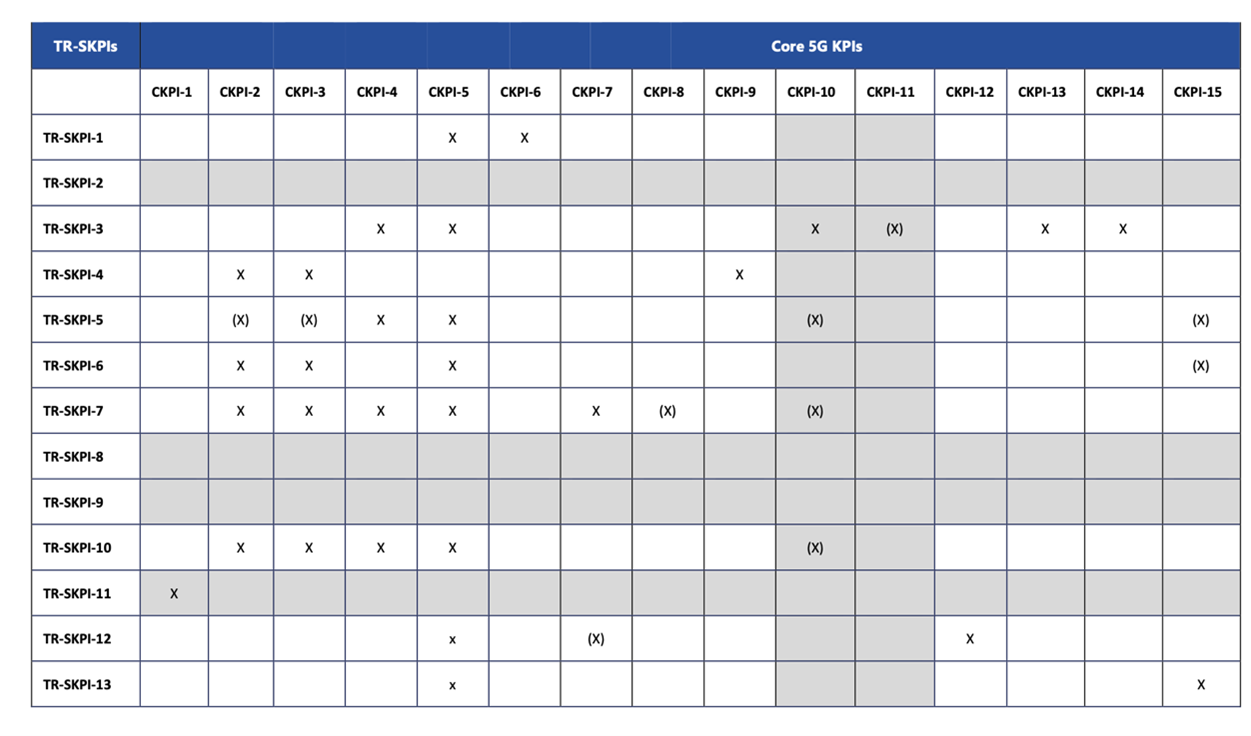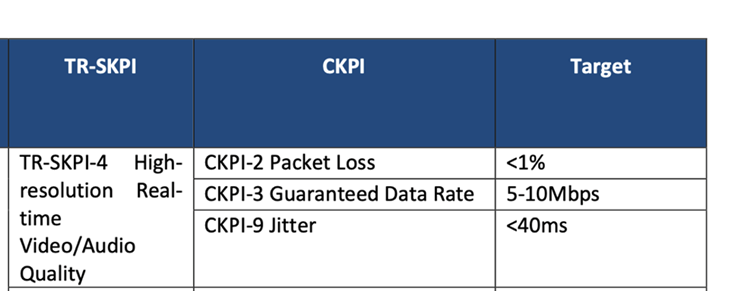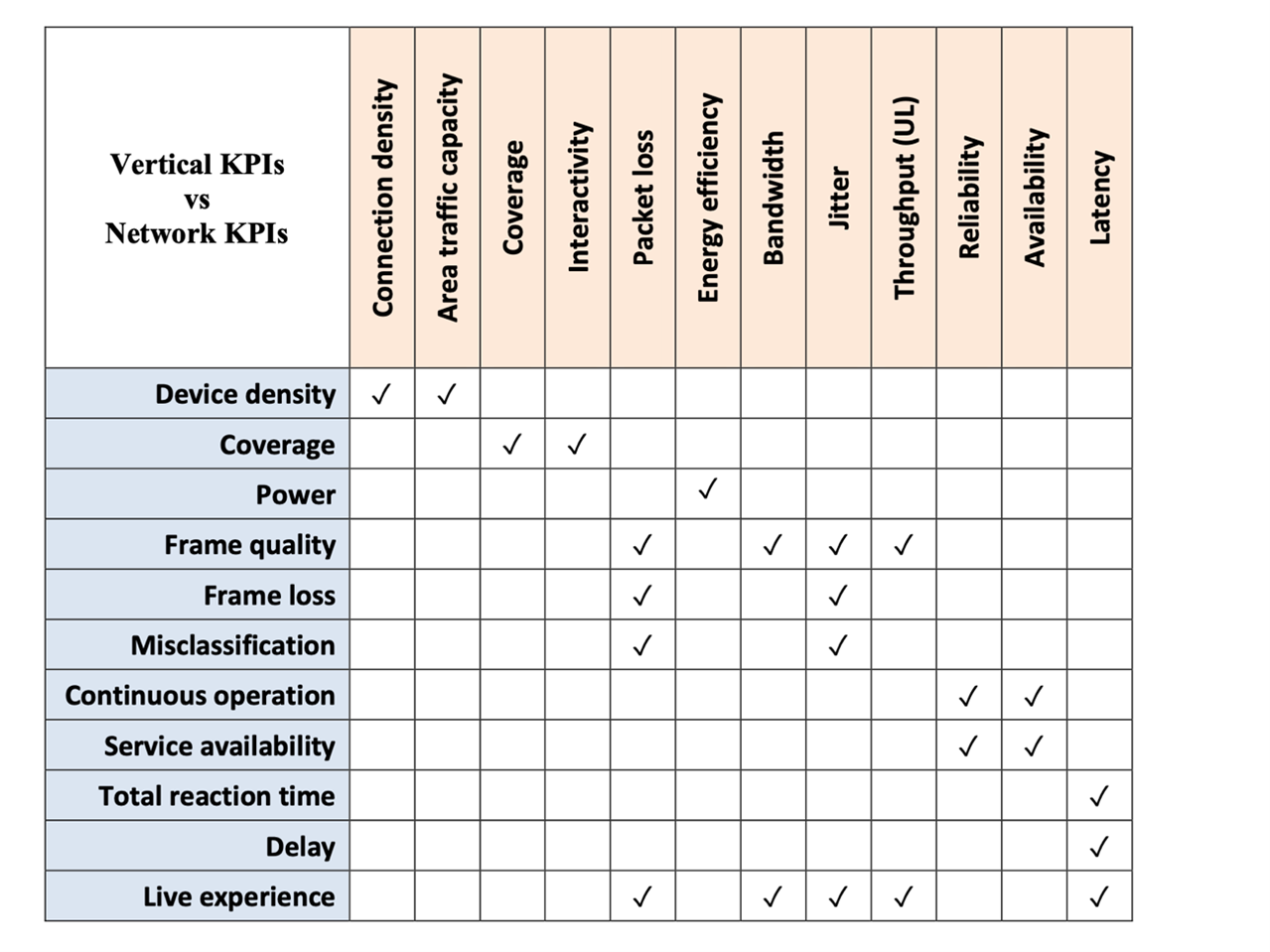
Mapping, testing and validating 5G network slices and services for vertical use cases with Emblasoft Evolver
Mapping, testing and validating 5G network slices and services for vertical use cases with Emblasoft Evolver
Mapping industry-specific KPIs to Core and Network KPIs allows mobile operators to offer new services supported by network slices to business customers and, in turn, build revenue. Once the KPIs are mapped, Emblasoft Evolver has the flexibility to help operators to build, test and validate new services to ensure they meet customer KPIs throughout the lifecycle of the service.
The provision of network slicing promises significant new revenue streams for mobile operators. Building logical (virtual) networks – network slices – on top of a shared physical architecture enables service providers to support a diverse range of use cases for different verticals and groups of users, each with distinctive characteristics, requirements, and KPIs.
5G provides the ability to support business critical, high-speed broadband, with ultra-low latency, to millions of simultaneous devices, enabling new use cases, such as advanced IoT applications, autonomous vehicles, AR/VR, and future innovative new services. Of course, each specific use case has different needs and characteristics. For example, the 5G requirements of an IoT-connected wind farm differ markedly from those of a self-driving vehicle requiring near-zero latency.
Network slices enable innovative industry use cases
Enabled by Software-Defined Networking (SDN) and Network Function Virtualisation (NFV), network slicing allows MNOs to divide their network into multiple virtual partitions, or slices, with each partition providing independent network functions (NFs) that can be tailored to the needs of each customer. It provides flexibility and a dedicated network to the end user, while enabling multiple functions and services on a common infrastructure.
When creating a slide, decisions need to be taken instantly regarding which NFs are required. It may also be necessary to consider bandwidth available to access these, and their locations (in highly distributed networks) to ensure latency goals are met.
Because slices are independent from one another, it means greater flexibility and customisation, guaranteed performance (defined by distinct SLAs), scalability, multi-vendor support, and stronger security. Furthermore, each slice can be modified without affecting any other and so supports DevOps practices.
Of course, when any new slice is created or modified it must be thoroughly tested and validated pre-production, and be actively monitored after launch for the entire lifecycle of the slice, or the services it’s supporting.
It’s also essential to ensure that each service supported by a slice, or each slice, performs to set KPIs so that service providers (MNOs) can meet their SLAs with each customer for each service or slice. These KPIs will be very different, reflecting the interests of the different stakeholders. On the mobile side, we have traditional KPIs – but what do these mean to stakeholders in different industries, who have very different concerns? The IoT-connected wind farm will measure operational performance with an entirely different set of KPIs – and may not understand the KPIs as expressed by the MNO providing the mobile service to support the specialised applications they need.
One answer is that operators must map the performance targets of each service or slice (in different verticals) to corresponding network KPIs – to ensure that the KPIs are met in terms of network performance correspond to the appropriate or required service performance levels in the real world.
Mapping Service KPIs to Network KPIs
The 5G PPP and the European Commission recently published a suggested methodology for mapping service performance to network KPIs in multiple verticals[1], including Industry 4.0, Smart Cities & Utilities, Agriculture, Transportation, Retail, and so on. It enables service and core KPIs to be mapped to KPIs that the mobile industry recognises. By controlling mobile KPIs it enables operators to model any service to any network slice. Let’s explore a couple of examples.
Rail use case
In modern railway transportation facilities, there is a demand for a broad range of novel on-board applications for passengers including “business services” (advanced guiding services, real time travel information, infotainment services), “critical services” (train control, railway emergency voice communication services between driver and controller(s) or the operations centre), and “performance services” (telemetry and maintenance services, non- critical real-time video).
In practice, different communications services are provided by different network deployments making it difficult to guarantee extensive coverage for all services along thousands of kilometres of track. It also makes Total Cost of Ownership (TCO) high for all stakeholders.
The FRMCS – Future Railway Mobile Communication System (FRMCS) – aims to address these inefficiencies using 5G. So, to achieve core mobile KPIs service performance levels and map them to core mobile KPIs, 5G PPP has developed some methodologies to follow.
For example, in the Rail industry some of the Service KPIs that need to be met, might include the following:
- TR-SKPI-1 – Service Setup Time
- TR-SKPI-3 – Device Mobility
- TR-SKPI-4 – High-resolution Real-time Video/Audio Quality
- TR-SKPI-5 – Service Area
- TR-SKPI-6 – Integrated Multitype Communications
- TR-SKPI-7 – Extensive Network Coverage in Vertical Premises
- TR-SKPI-10 – Service Availability
- TR -SKPI-12 – Area Traffic Density
- TR-SKPI-13 – Service Reliability
In turn, these need to be mapped to mobile industry KPIs, such as:
- CKPI-1 End-to-end Latency
- CKPI-2 Packet Loss
- CKPI-3 Guaranteed Data Rate
- CKPI-4 Coverage
- CKPI-5 Availability
- CKPI-7 Connection Density
- CKPI-8 Data Volume
- CKPI-9 Jitter
- CKPI-10 Received Radio Signal Quality
- CKPI-12 Area Network Capacity
- CKPI-13 Mobility / Speed
- CKPI-14 Handover time
- CKPI-15 Reliability
Using the 5GPP methodology as a guide, the following table could serve as a map between Service KPIs and Core KPIs in the Rail vertical use case.
Table 1. Mapping Rail Service KPIs to mobile network KPIs

Source: 5G PPP (IBID)
Of course, different services, for example “Business Services”, would require a different, specific mapping methodology of its own. For example, the provision of high-resolution, real-time video audio quality would require the following KPIs (Service and Network) to be mapped to each other and tested and validated (see figure below as an example).
Table 2. Testing and validating network KPIs in the Rail sector

Source: 5G PPP (IBID)
Agriculture use case
As previously discussed, Core KPIs for vertical use cases or services will differ markedly. So, for example, in comparison to the Rail mapping methodology, the Service vs. Network KPI might look something like this:
Table 3. Service vs. Network KPIs in Agriculture

Source: 5G PPP (IBID)
In summary, once client from a given sector (rail, agriculture, industrial manufacturing, and so on) has defined the KPIs for each service they require, the mobile operator needs to map these into Core and Network KPIs. The Core KPIs can then be modelled through automated test and validation, and then tuned to achieve the desired service outcome and target KPIs.
To take advantage of the revenue opportunities offered by these, and many more, examples, operators need to access documents such as the reference article here (5GPP) and similar, to map Service/vertical KPIs to Core and Network KPIs. More importantly, they require a way to model, test, modify and validate any given service for a specific slice. And, in the competitive and dynamic multivendor 5G environment, such tools need to be simple to use, quick, and automated – while providing the flexibility to manipulate the network KPIs – and the acceptance thresholds for those KPIs (pass criteria) - that operators can control.
Emblasoft Evolver: Testing and Validating industry use cases
Emblasoft Evolver has been designed to do exactly that. Evolver is a single platform supporting multiple, comprehensive test and validation solutions. It can emulate any node in the network – which means any logical function within the Service-Based Architecture including NFs and user equipment – and can test as part of a flow of actions, establish sessions, make calls, and so on.
Evolver runs automated tests – which can be picked from a comprehensive library of proven scenario templates or customised to your needs using a powerful script editor – and collates multiple test results, including (but not limited to) slice specific metrics, such as jitter, latency, lost packets, guaranteed data rates, throughput, QoS, slice instantiation times, and so on. It provides a complete picture of each model, enabling operators and service providers to either launch the service or modify it to meet the required customer KPIs.
Because Evolver can emulate any network function or node it means that operators can manipulate, model, and modify unlimited test scenarios by tweaking Network KPIs to measure the impact each change has on Service KPIs. In turn, it enables operators to quickly identify bottlenecks and issues, and ultimately to optimise Service KPIs and performance levels.
Emblasoft Evolver also offers Active Monitoring, to perform the same role post-launch, ensuring that KPIs are maintained and that network administrators are alerted instantly should issues arise during operation. In short, Emblasoft Evolver supports operators by ensuring that each network slice or service is “fit for purpose” – i.e., meets the industry use case KPI requirements – before launch, and ensuring that those standards are maintained throughout the lifecycle of the service.
It means that operators can push ahead confidently safe in the knowledge that they can test and validate new use cases, and ensure that they meet industry-specific customer KPIs by configuring the right network KPIs to support the requisite service, helping them to build significant new business revenue streams through 5G-enabled network slicing. To find out more, contact us today.
[1] Service performance measurement methods over 5G experimental networks